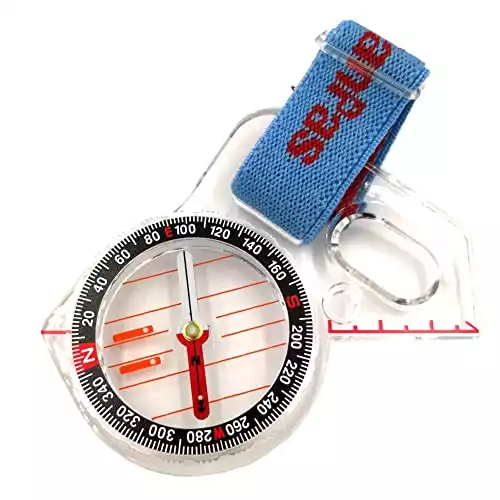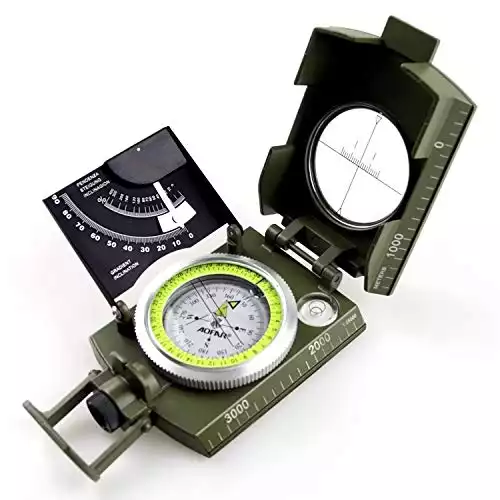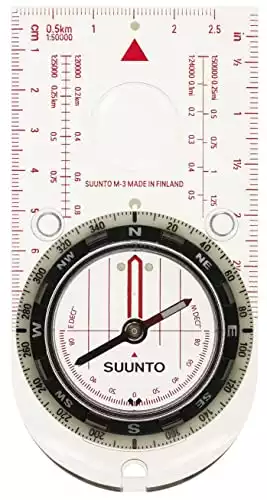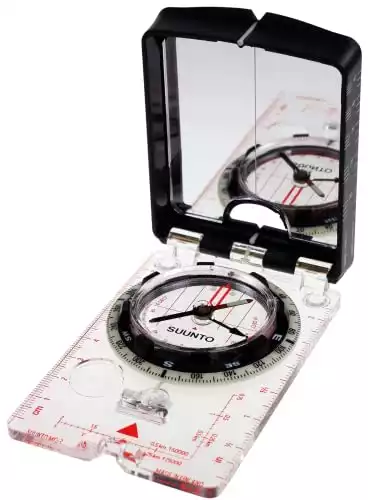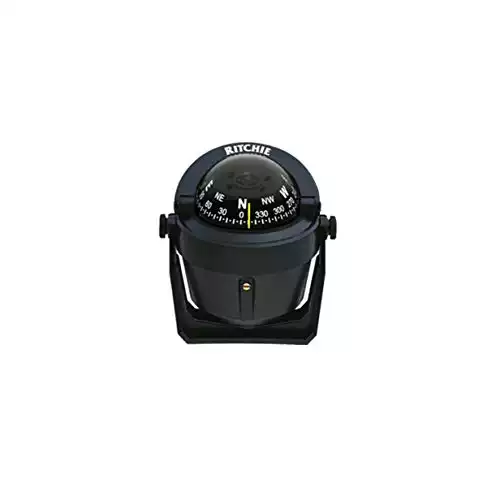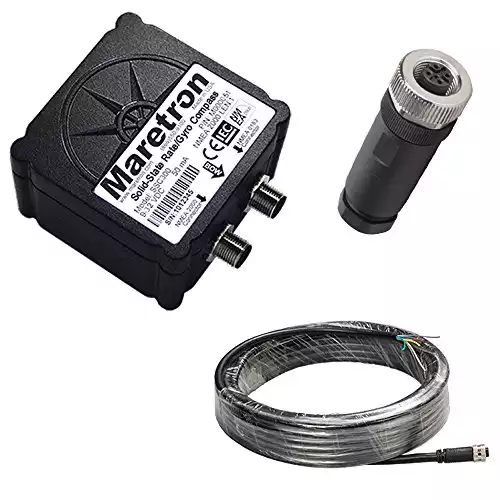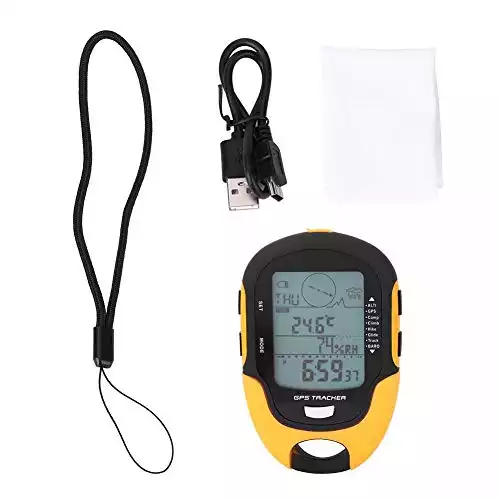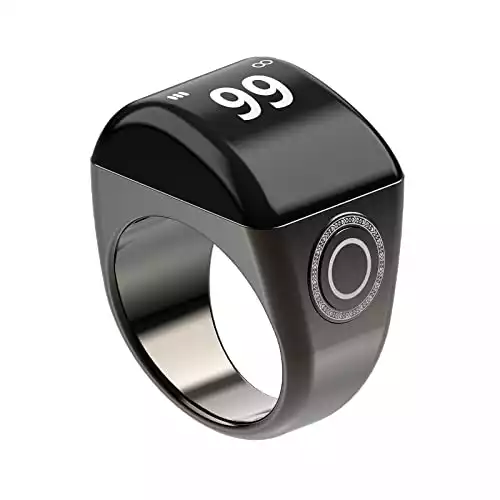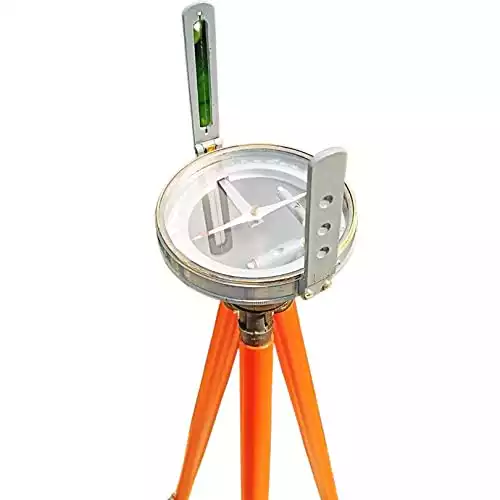[ad_1]
A compass is an essential survival tool, but choosing the right one depends on your intentions. A little knowledge goes a long way to ensure you invest in the right option.
The Difference Between True North and Magnetic North
Represented by longitude and latitude, true north points toward the North Pole. It is a constant and fixed location. Conversely, magnetic north points towards Earth’s magnetic field and is a bit more flexible. It changes over time in conjunction with Earth’s magnetic core.
At night you can use the North Star to find true north. However, there is no constellation to assist in finding magnetic north. Simply put, true north is a precise location, whereas magnetic north is a general direction.
Types of Compasses
There are really only two types of compasses: magnetic and nonmagnetic. However, there are numerous subtypes, which we review below.
As the name implies, a magnetic compass aligns with Earth’s magnetic field, which causes the needle ends of the compass to point magnetic north and south.
A nonmagnetic compass uses an inner gyroscope to align itself with the Earth’s axis of rotation, thereby always pointing true north.
Which Is Better: Magnetic or Nonmagnetic?
Because traditional magnetic compasses point toward Earth’s magnetic field, they are far less accurate than their nonmagnetic peers. This is especially true when they’re near metal objects, such as ships and planes, or in locations where iron ore is prevalent.
While nonmagnetic compasses are far superior in accuracy, they require an advanced skill set to use efficiently. These compasses are larger, heavier, and typically require electricity to function.
Thus, nonmagnetic compasses are typically limited to commercial craft. For this reason, magnetic compasses remain overwhelmingly popular among survivalists and outdoor adventurers—with a few exceptions.
Types of Magnetic Compasses
Liquid Compass
The term liquid compass is sometimes used interchangeably with magnetic compass. This is because a mixture of alcohol and water generally fills modern magnetic compasses. However, some contain a phosphorescent luminous paint that glows in the dark for nighttime reading.
A magnetized needle or card is submerged in the fluid to slow its motion and improve its readability. In contrast, years ago, some compasses used air to create an induction field to interact with the Earth’s magnetic poles.
However, because of their unreliability, they are no longer used. You’ll still hear the term liquid compass tossed around quite a bit, and you may even find an “air-dampened” compass from time to time. Unfortunately, they are usually toy trinkets and definitely not something you want as a survival device.
Thumb Compass
As the name implies, you generally wear thumb compasses on the thumb, like a ring. Avid outdoor adventurers and various sports competitors frequently use these in competitions, such as cross-country or ultra-running.
Thumb compasses are ideal for quick orientation while on the move. Their small size makes it easy to manage a map and compass simultaneously without slowing you down.
Rather than setting a bearing, they orient your map so you can easily follow the proper course.
Lensatic Compass
Often called military compasses, lensatic compasses are the most durable on the market today. They have proven capable of withstanding a great deal of abuse without losing functionality.
Lensatic compasses consist of a base, cover, and rear lens. The cover usually features a sighting wire running down the middle for sighting. With this, you can target distant objects and stay focused with better accuracy when compared to baseplate compasses.
Additionally, when you open the cover completely, it aligns with the base, giving you a straight-edge ruler for marking and orienting your map. Lensatic compasses are ideal for survival bags because they withstand inclement weather and can take a beating.
Baseplate Compass
The baseplate compass, also known as an orienteering compass, is the most common among outdoor enthusiasts and the easiest to use for beginners. These compasses use a needle mounted on a clear 360-degree covering.
Many also feature additional tools, like a distance scale or magnifying glass, for more effective navigation. The baseplate compass works well for plotting and makes identifying landmarks and topographic lines much easier.
While this compass is not ideal for sighting distant objects, it is one of the easiest to use when taking a bearing between two points on your map. The baseplate compass is an ideal choice for hiking and backpacking.
Mirrored Baseplate Compass
Sometimes called a “sighting compass,” the mirrored baseplate is an upgraded version of the baseplate compass. The added mirror feature not only allows you to sight a direction or object, but it also enables you to signal over long distances. Some even feature clinometers for measuring slope.
Marine Compass
Not to be confused with the Jarhead type, the marine compass is often referred to as a boating compass. It rests just in front of the helmsman, so boaters always know which direction the boat is facing.
The compass itself is a dome-shaped globe with a fixed needle and floating directional plate. Marine compasses absorb the motion from your watercraft, making them easier to read than a typical needle compass.
Helmsmen frequently use marine compasses in conjunction with nautical charts. This allows them to go from compass to map and back again without having to do any mathematical calculations.
However, be sure to keep them away from anything electronic, magnetic, or metallic. Otherwise, you may find yourself off course. This type of compass is ideal for any watercraft, including kayaks and canoes.
Solid-State Compass
The solid-state compass is an electronic compass that employs magnetic field sensors and a microprocessor to display orientation. Solid-state compasses are gaining popularity over fluxgate technology due to their enhanced reliability and performance.
You can find these compasses in today’s modern technology devices, such as digital tablets, phones, and clocks. However, commercial boats and aircraft also use solid-state compasses together with dedicated display instruments, autopilots, chart plotters, and other navigational software.
Types of Nonmagnetic Compasses
GPS Compass
By utilizing the Global Positioning System of your cell phone, GPS compasses use satellites to show the direction and movement of the compass. They portray longitude, latitude, and even altitude to calculate cardinal directions.
They are extremely reliable but unsuitable for long-term outdoor use due to their limited power supply.
In addition, you should know that your phone automatically converts to a solid-state compass if you turn your location device off. As a result, this would point you toward magnetic north instead of true north.
GPS compasses also come in hand-held form and range from a basic GPS compass to a highly advanced Garmin device.
Fluxgate Compass
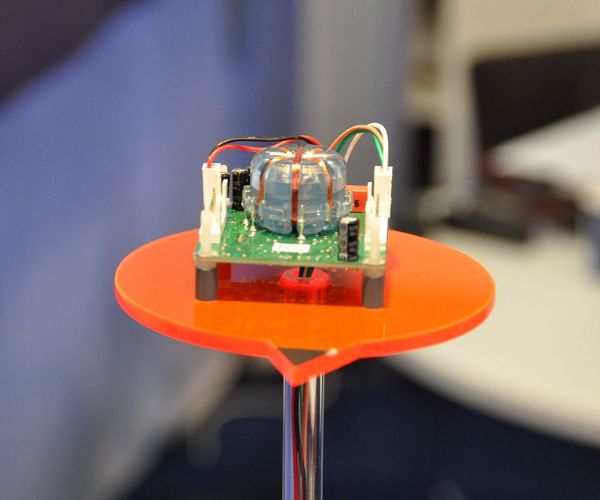
A fluxgate compass is an electromagnetic compass used in the navigation of ships. Unlike traditional magnetic compasses, a fluxgate compass doesn’t have a pointer for direction.
Instead, it utilizes wire coils wrapped around magnetic material. An electric current passes through the coils, acting as an electromagnet to find Earth’s horizontal magnetic field.
Fluxgate compasses are not affected by magnetic declination or movement. Unfortunately, they only work with electricity.
Gyrocompass
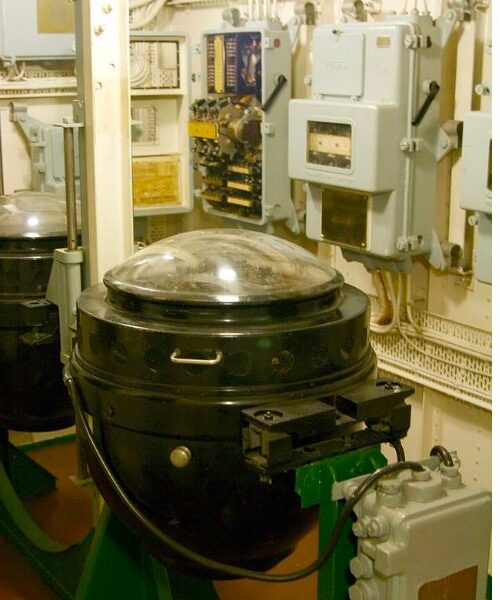
Large seafaring vessels almost always use gyrocompasses as their primary navigation tool. These electrical, nonmagnetic compasses continually maintain a true north orientation using the laws of physics, gravity, and Earth’s rotational pull.
Unlike magnetic compasses, they are not affected by external magnetic fields.
Solar Compass
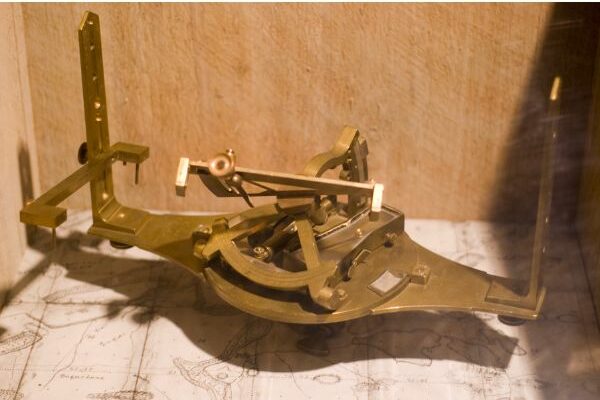
A solar, or sun, compass determines true north by using the sun’s position. Like a sundial, the solar compass uses the time of day, angle of shadows, latitude, and season to determine where you are in relation to the sun.
Although people sometimes use solar compasses for navigation, they primarily use them for land surveying. The sun compass is most useful in high altitudes, areas where iron ore is high, or near the poles where magnetic compasses waiver.
Astrocompass
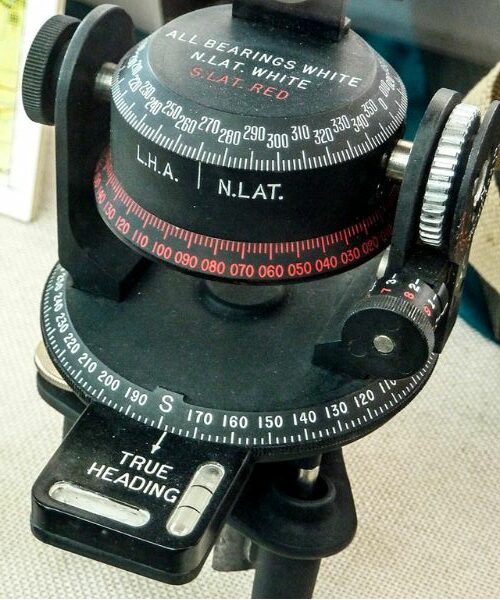
Historically, pilots and navigators typically used astrocompasses in the arctic regions to determine true north by using the location of the sun and stars.
To use an astrocompass, you must first know your longitude and latitude, time of day, Greenwich hour angle (GHP), and the declination of the celestial body you’re observing. You’ll also need a current air almanac.
Other Types of Compasses
People Compass
People compasses are nifty gadgets that work well in crowded places. Attach carabiner-like clips to your people, and see their locations on your compass screen. The people compass shows real-time direction and distance of up to 12 party members.
These compasses also prove useful during outdoor excursions to ensure no one gets lost or left behind.
Qibla Compass
If instead of north, you seek the direction of Qibla, then there’s a compass for that too. Practicing Muslims face the direction of Mecca when praying. However, it can be difficult to find Mecca in unfamiliar territory. Often sewn directly into prayer rugs, a Qibla compass points you in the right direction if you know your longitude and latitude.
Even better, with today’s technology, the Qibla Locator App uses Google Maps technology to point you in the right direction.
Prismatic Compass
Prismatic compasses are traditionally used during a compass survey to find the position of objects. You can use a prismatic compass to run a traverse line and calculate bearings using the magnetic needle. Civil engineers mostly use prismatic compasses to find approximate angular measurements when speed outweighs accuracy.
Surveyor’s Compass
It won’t help you find your way, but you can use a surveyor’s compass to measure horizontal angles. Often used in conjunction with prismatic compasses, civil engineers use surveyor’s compasses during land surveys to determine the magnetic bearing of a line toward magnetic north.
Proportional Compass
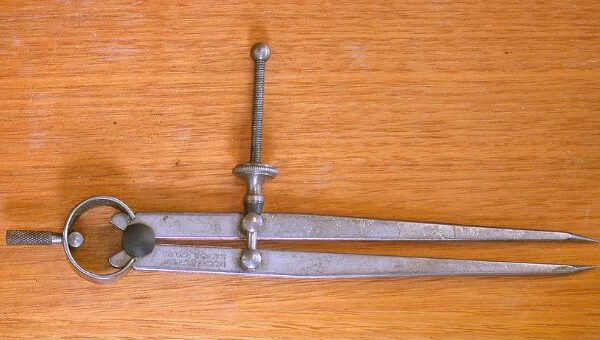
Dating back to ancient days, engineers predominantly used the proportional compass for mathematical and engineering calculations. While it won’t help you navigate your way, it can help you measure the distance between two points on your map based on proportionality.
Essentially, it is the equivalent of your map scale. If you’re mapping uncharted territory, this is a very useful tool.
Rémi Kaupp, CC BY-SA 3.0, via Wikimedia Commons
Dustin Plunkett, CC BY 2.0, via Wikimedia Commons
Steven Fine, CC BY-SA 4.0, via Wikimedia Commons
Glenn McKechnie, CC BY-SA 3.0, via Wikimedia Commons
[ad_2]
Source link

